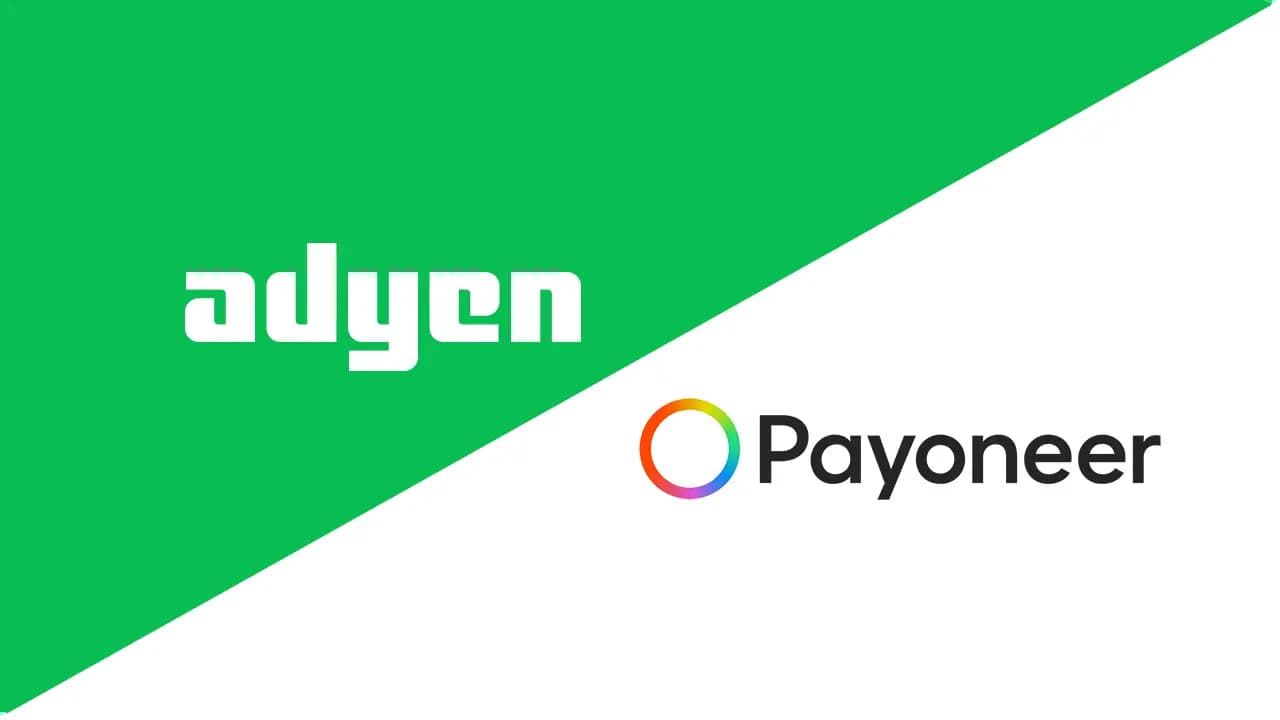
Stripe vs Spreedly: A Comprehensive Report
Which Payment Solution Is Right For Your Business?
Businesses are continually searching for the most effective payment integrations to enhance customer experiences and streamline operations. Leveraging a third-party platform can simplify payment setup and management, reducing technical complexity and allowing businesses to focus on growth.
This document provides a thorough comparative analysis of two prominent payment processing solutions: Stripe and Spreedly. By dissecting their features, strengths, and weaknesses, we aim to equip business leaders and decision-makers with the insights necessary to make informed choices that align with their operational needs.
Stripe stands out as a user-friendly, all-in-one payment processing platform that caters to businesses of all sizes, providing comprehensive solutions with an emphasis on ease of use and integration. Stripe also serves as a provider of financial infrastructure for online businesses, offering foundational tools and systems necessary for processing payments and managing transactions.
On the other hand, Spreedly offers a robust payment orchestration platform (POP) that allows merchants to connect multiple payment gateways and processors seamlessly, providing greater flexibility and control over their payment data. Together, these solutions represent distinct approaches to managing digital transactions, each with its unique benefits for different business models.
Table Of Contents:
- What Is A Payment Gateway?
- What Is A Payment Orchestration Platform?
- Stripe Overview
- Spreedly Overview
- Stripe vs. Spreedly: Side-by-Side Comparison
- Final Recommendations)
Payment Gateway Overview
A payment gateway acts as the digital equivalent of a point-of-sale (POS) terminal, securely transmitting payment data between a customer’s browser and the payment processor, which then communicates with banks to authorize and settle the transaction. Together, the gateway and processor enable businesses to accept a variety of payment methods—such as credit cards, debit cards, digital wallets, and local options—through their online store.
While the gateway handles the front-end interaction and securely captures payment details, the processor manages the behind-the-scenes movement of funds. This combination allows ecommerce businesses to offer a fast, secure checkout experience that builds customer trust and supports scalable growth.
It’s increasingly common for payment service providers, including Stripe, to offer an all-in-one solution that combines a processor and gateway. This combined offering allows businesses that need to get up and running quickly to do so. However, this setup typically ties the merchant to a specific provider or gateway, which is where payment orchestration platforms offer a more flexible alternative.
Payment Orchestration Overview
While a payment processor and gateway handle the technical side of moving money and authorizing transactions, a payment orchestration platform adds a strategic layer of flexibility and control. Platforms like Spreedly enable businesses to connect to multiple payment service providers (PSPs), gateways, and third-party tools through a single integration. This approach reduces reliance on a single provider and allows companies to route transactions dynamically based on factors like geography, cost, performance, or redundancy needs.
In short, a POP acts as the central hub for managing how, where, and through whom payments are processed. It empowers businesses to optimize success rates, improve resilience, and adapt more easily to changing market conditions—all without the need to replace their core infrastructure.

Stripe
Stripe is a widely recognized player in the online payments industry, esteemed for its intuitive interface and all-in-one solution. Here’s a closer look at its features and operational strengths:
What Is Stripe?
Stripe is a leading payment processing platform that enables businesses to accept payments online and in person. With its robust suite of tools and APIs, it is designed to simplify payment gateway integration for both e-commerce businesses and service providers, making it an ideal choice for startups and established companies alike.
How Does Stripe Work?
Stripe operates by providing businesses with a set of APIs and tools to facilitate payment processing. When a customer makes a purchase, the payment information is captured through a secure interface, encrypted, and sent to Stripe for processing. The platform supports multiple payment methods, including credit and debit cards, digital wallets like Apple Pay and Google Pay, and even cryptocurrency transactions. Stripe payment processing ensures quick fund deposits into the merchant’s bank account, typically within a few days.
Stripe Features And Pricing
When selecting a payment service provider, merchants need to consider various factors, including features, pricing, and security. Here’s an overview of Stripe’s features and pricing:
Stripe Features
Stripe is a popular payment service provider that offers a range of features, including:
- Online payment processing: Stripe enables merchants to accept online payments through a secure payment gateway.
- Recurring payments: Stripe supports recurring payments, making it easy for merchants to manage subscription-based businesses.
- Mobile payments: Stripe offers mobile payment solutions, including Apple Pay and Google Pay.
- Fraud prevention: Stripe provides advanced fraud prevention tools to help merchants minimize chargebacks and disputes.
- Payment analytics: Stripe offers payment analytics, enabling merchants to track transaction data and optimize their payment processing.
Stripe Pricing
Stripe’s pricing is competitive, with no monthly fees or setup costs. Merchants pay a fixed processing fee per transaction, which varies depending on the payment method and currency.
- Online credit card transactions: 2.9% + 30¢ per transaction
- In-person credit card transactions: 2.7% + 5¢ per transaction
- International transactions: 3.9% + 30¢ per transaction
Stripe also offers custom pricing for large businesses and enterprises, which can be negotiated based on transaction volume and other factors. This flexibility makes Stripe an attractive option for businesses of all sizes, from startups to large corporations, looking for a reliable and cost-effective payment processing solution.
Who Benefits The Most From Stripe?
Stripe Is best For:
- E-commerce businesses that need a reliable payment processing solution to manage online transactions.
- Subscription services that require recurring billing capabilities.
- Marketplaces that facilitate transactions between buyers and sellers, as Stripe supports split payments.
- International businesses due to its support for multiple currencies and localized payment methods.
Ideal Use Cases For Stripe
Stripe excels in various scenarios, including:
- Launching subscription-based services.
- Facilitating marketplaces that require transactions between multiple parties.
- Supporting mobile app developers with in-app payment processing.
- Enabling startups to validate their ideas quickly without extensive backend infrastructure.
What Customers Say: Reviews Of Stripe
Market Perception of Stripe
Stripe has garnered a wide range of reviews from users, emphasizing both its strengths and areas for improvement.
Pros of Stripe
- Ease of setup: Users often commend Stripe for its ease of integration and user-friendly dashboard, which simplifies transaction monitoring.
- Robust API: Many appreciate the robust API that allows developers flexibility to customize the payment experience.
Cons of Stripe
- Poor customer support: Some users have reported difficulties with customer support, noting that response times can be slow during high-demand periods.
- Complex fee structures: There are complaints regarding unexpected fee structures, which can be confusing for new users.
Common Drawbacks of Stripe
While Stripe has many positive features, recurring complaints include:
- Fee transparency: Complexity in navigating the fee structure.
- Localization: Limitations in available support options for some regions.
- Scalability and flexibility: Users have expressed concerns about the stability of some payment methods during peak times.

Spreedly
Spreedly is a powerful and flexible payment orchestration platform that empowers businesses to optimize their payment strategy by enabling access to multiple gateways and service providers. It’s an ideal solution for companies that need agility, global reach, and increased control over their payments infrastructure.
What Is Spreedly?
Spreedly is a payment orchestration platform that connects companies to over 120 payment gateways and services through a single API. Rather than acting as a payment processor itself, Spreedly enables businesses to route transactions across multiple providers, helping improve transaction success rates, reduce vendor lock-in, and support complex business models like global commerce or marketplace payments.
How Does Spreedly Work?
Spreedly sits between your application and the payment gateways you want to use. It tokenizes payment data and allows merchants to dynamically route transactions to the most appropriate gateway based on performance, cost, region, or redundancy requirements. This flexibility is especially valuable for businesses operating in multiple markets or with a need for failover processing. By decoupling the payment strategy from any one provider, Spreedly enables more resilient and adaptive commerce operations.
Spreedly Features and Pricing
For businesses evaluating orchestration tools, Spreedly’s value lies in its adaptability, enhanced control, and vendor-agnostic approach.
Spreedly Features
Spreedly provides a broad set of orchestration tools, including:
- Gateway and PSP agnostic connections: Connect to 120+ gateways and PSPs through a single integration.
- Vaulted payment methods: Securely store and reuse payment data across providers using PCI-compliant tokenization.
- Smart transaction routing: Dynamically route payments based on business logic or performance data.
- Failover support: Automatically retry failed transactions with alternate providers.
- Marketplace support: Facilitate multi-party payments and revenue splits with enhanced control.
Spreedly Pricing
Spreedly offers tiered pricing based on usage, number of gateways, and vault storage. While pricing is customized for larger businesses, general plans typically include:
- Developer plan: Starts at $200/month with access to core features and a limited number of gateways.
- Growth and Enterprise plans: Custom pricing based on transaction volume, support needs, and gateway count.
This flexible model supports businesses from mid-size SaaS providers to large global enterprises that need enterprise-grade orchestration capabilities.
Who Benefits The Most From Spreedly?
Spreedly is best for:
- Multi-national businesses requiring access to localized gateways in different regions.
- Marketplaces and platforms that need to route transactions between multiple parties or processors.
- Enterprises seeking redundancy and failover across providers for higher transaction reliability.
- Fintech platforms that want to avoid vendor lock-in while scaling payment capabilities.
Ideal Use Cases For Spreedly
Spreedly is ideal in scenarios such as:
- Expanding into new markets where preferred payment methods or gateways differ.
- A/B testing PSPs to improve authorization rates.
- Building marketplace or platform-based business models with complex routing requirements.
- Transitioning away from a monolithic payments provider to reduce cost and increase agility.
What Customers Say: Reviews Of Spreedly
Market Perception Of Spreedly
Spreedly is widely praised for its ability to give businesses strategic flexibility in payments. Here’s what users highlight:
Pros Of Spreedly
- Broad connectivity: Access to a large network of gateways and PSPs without multiple direct integrations.
- Business agility: Quickly test and switch between providers to adapt to market or performance changes.
- Strong developer tools: Straightforward APIs and excellent documentation for easy integration.
Cons Of Spreedly
- Initial learning curve: Some businesses note a steeper setup process compared to plug-and-play PSPs.
- Upfront cost: Spreedly’s value increases with scale, so it may be a heavier investment for smaller businesses.
Common Drawbacks Of Spreedly
- Not a PSP: Businesses must still contract separately with payment gateways or processors.
- Limited built-in UI tools: Spreedly is developer-focused and doesn’t offer end-user UI elements like hosted checkouts.
Stripe vs. Spreedly: A Direct Comparison
Financial, Payment Processing Fees & Market Insights
- Key financial metrics: Although specific metrics for Stripe may not be publicly disclosed, it operates on a revenue-sharing model, charging a standard fee of 2.9% + 30¢ per transaction. Spreedly, in contrast, utilizes a subscription pricing coupled with transaction fees, which may lead to varying costs depending on customer volume.
- Market position and growth trends: Stripe has cemented itself as a market leader, boasting over 1 million users and high-profile partnerships with big names like Amazon and Uber. Its continuous expansion into international markets aligns with growing e-commerce trends. Spreedly, while not a direct competitor, targets a niche with its orchestration capabilities, appealing particularly to e-commerce retailers and SaaS companies.
- Recent regulatory changes: Regulatory scrutiny has intensified globally, impacting payment processors. Stripe has been proactive in adapting to GDPR and PSD2. Spreedly also aligns with these regulations but may face challenges integrating compliance for multiple processors.
Feature Comparison
| Feature | Stripe | Spreedly |
|---|---|---|
| Billing & Invoicing | ✅ | ✅ |
| Currency | ✅ | ✅ |
| Customizable Branding / White Label | ✅ | ❌ |
| Deployment | ✅ | ✅ |
| Fraud Tooling | ✅ | ✅ |
| Integration Capabilities | ✅ | ✅ |
| Management | ✅ | ✅ |
| Payment Types | ✅ | ✅ |
| Reconciliation | ✅ | ✅ |
| Reporting & Data Analysis | ✅ | ✅ |
| Security / Compliance | ✅ | ✅ |
| Smart Routing | ✅ | ✅ |
| Split Payments | ✅ | ⚠️ |
| Supported Payment Methods | ✅ | ✅ |
| Tokenization | ✅ | ✅ |
| Vaulting | ✅ | ✅ |
*Spreedly’s ability to offer some of these features is dependent upon a PSP or payment gateway that supports the same features.
Strengths: Comprehensive Support, Advanced Security, And Global Reach
Stripe
- Highly user-friendly interface and quick setup, making it accessible for businesses of all sizes.
- Comprehensive API support, allowing for flexible implementation and extensive customization.
- Strong global presence, enabling businesses to accept payments in various currencies and regions.
- Built-in tools for subscription management, fraud prevention, and data analytics.
Spreedly
- Robust payment orchestration, allowing seamless integration with numerous processors and gateways.
- Extensive support for international payments, accommodating many local payment methods essential for e-commerce expansion.
- Advanced tokenization and security features, enhancing data protection for businesses.
- Ideal for complex billing scenarios and businesses with diverse payment needs.
Weaknesses: Complexity And Transaction Fees
Stripe
- Additional transaction fees can accumulate with certain integrations, potentially increasing costs.
- Less flexibility in choosing multiple payment gateways compared to orchestration solutions like Spreedly.
- Customer support, while generally effective, may not be as readily available for complex issues.
Spreedly
- Initial setup can be complex and may require technical expertise, posing challenges for non-technical users.
- Pricing structure may be considered high for small to medium-sized enterprises, challenging their scaling efforts.
- A less intuitive user interface, which can create a steep learning curve for new users.
Final Summary & Recommendation
When choosing between Stripe and Spreedly, businesses should consider their unique payment processing needs.
- Choose Stripe if you value ease of use, a robust all-in-one platform for payment processing, and require strong analytic tools. It is particularly favorable for startups and businesses looking for quick setups and minimal ongoing complexities.
- Choose Spreedly if your business involves multi-gateway integrations or complex subscription billing. Its orchestration capabilities make it ideal for companies looking to optimize payment solutions across various processors, especially in international markets.
In conclusion, the decision should align with the specific operational needs, technical capabilities, and long-term strategic goals of the business.





